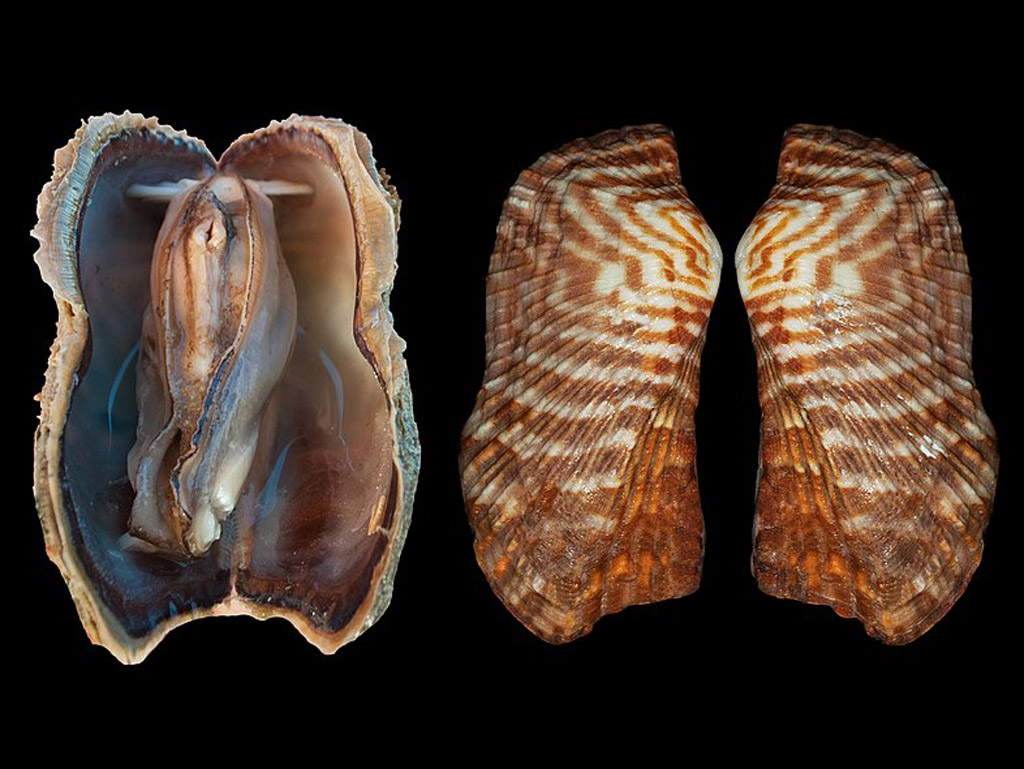
Noah's ark
lat. Arca noae
Noah's ark
Noah’s ark lives along the entire coast of the Adriatic, but not everywhere like mussel. There are places where numerous dense clusters can be found , while at other areas it is almost unknown. It commonly inhabits hard sufaces but it’s also found on the gravelly –shelled bottom provided that there are stones. It’s always attached to the surface at the depth between 1 and 10 m. The largest clusters in our part of the Adriatic are to be found along the coast of Istria, around Umag and Novigrad, in Pašman passage, Mali ston bay and other localities.
Kunjka is to be looked for on positions with strong sea current but at the same time protected from the strong impact of the sea. Similar to other shells, it feeds by filtrating salt water, taking the plankton and other small particles.Extracting Noah’s ark from there is not a problem. They can be hand picked but it’s easier with the help of the special hook called ”kunjkar”. The boat pulls it on the bottom and it picks the shells of the ground and immediately collects it. There are also special pliers that can serve to torn the shells from the bottom. Extracting is possible throught all year but it is mostly done during the summer. Sport fishermen use it as a good bait when fishing with fishing line. It’s excellent to catch many types of white fish that have a tendency to bite greedly.
Nutritional valueShells are eaten by majority of population rarely, mostly in sprecial occasion. They are a storage of many important nutritive ingredients such as low fat proteins, selenium, magnesium, vitamins B6 ans 12, niacin and healthy omega 3 fatty acids. Therefore, it is no wonder they are called treasure from the bottom of the sea. Most shells have poor energy value as they are made pretty much from unsaturated fatty acids. In addition, they are poor in cholesterol ,containing far less then animal meat. Regular consumation can help to strengthen brain, heart, immune system and help loose weight.






